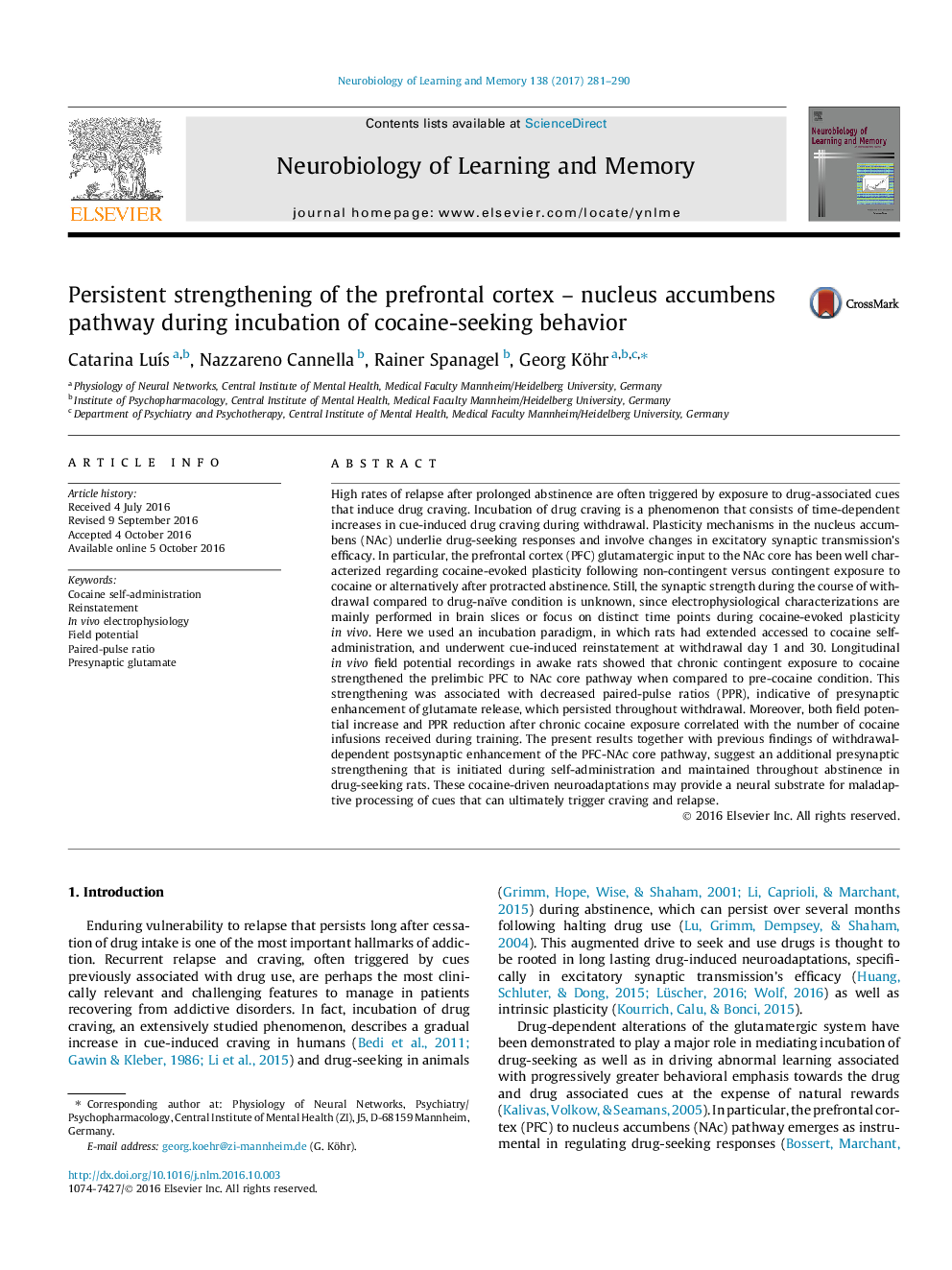| کد مقاله | کد نشریه | سال انتشار | مقاله انگلیسی | نسخه تمام متن |
|---|---|---|---|---|
| 5043340 | 1475136 | 2017 | 10 صفحه PDF | دانلود رایگان |

- PFC-evoked field potentials in NAc core are suitable for longitudinal in vivo studies.
- Chronic contingent exposure to cocaine strengthens the PFC-NAc pathway.
- Decrease of paired-pulse ratios persists throughout withdrawal.
- Degree of incubation correlates with potentiated FPs at chronic time point.
High rates of relapse after prolonged abstinence are often triggered by exposure to drug-associated cues that induce drug craving. Incubation of drug craving is a phenomenon that consists of time-dependent increases in cue-induced drug craving during withdrawal. Plasticity mechanisms in the nucleus accumbens (NAc) underlie drug-seeking responses and involve changes in excitatory synaptic transmission's efficacy. In particular, the prefrontal cortex (PFC) glutamatergic input to the NAc core has been well characterized regarding cocaine-evoked plasticity following non-contingent versus contingent exposure to cocaine or alternatively after protracted abstinence. Still, the synaptic strength during the course of withdrawal compared to drug-naïve condition is unknown, since electrophysiological characterizations are mainly performed in brain slices or focus on distinct time points during cocaine-evoked plasticity in vivo. Here we used an incubation paradigm, in which rats had extended accessed to cocaine self-administration, and underwent cue-induced reinstatement at withdrawal day 1 and 30. Longitudinal in vivo field potential recordings in awake rats showed that chronic contingent exposure to cocaine strengthened the prelimbic PFC to NAc core pathway when compared to pre-cocaine condition. This strengthening was associated with decreased paired-pulse ratios (PPR), indicative of presynaptic enhancement of glutamate release, which persisted throughout withdrawal. Moreover, both field potential increase and PPR reduction after chronic cocaine exposure correlated with the number of cocaine infusions received during training. The present results together with previous findings of withdrawal-dependent postsynaptic enhancement of the PFC-NAc core pathway, suggest an additional presynaptic strengthening that is initiated during self-administration and maintained throughout abstinence in drug-seeking rats. These cocaine-driven neuroadaptations may provide a neural substrate for maladaptive processing of cues that can ultimately trigger craving and relapse.
166
Journal: Neurobiology of Learning and Memory - Volume 138, February 2017, Pages 281-290